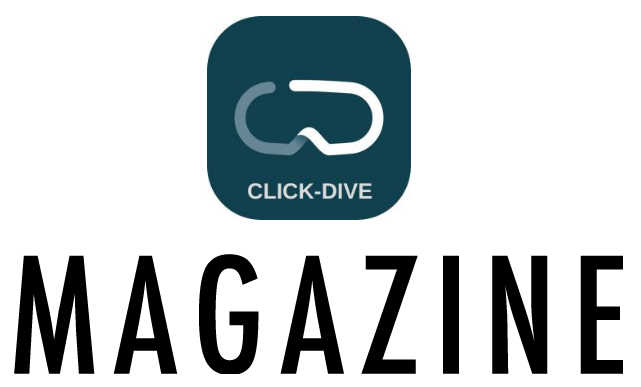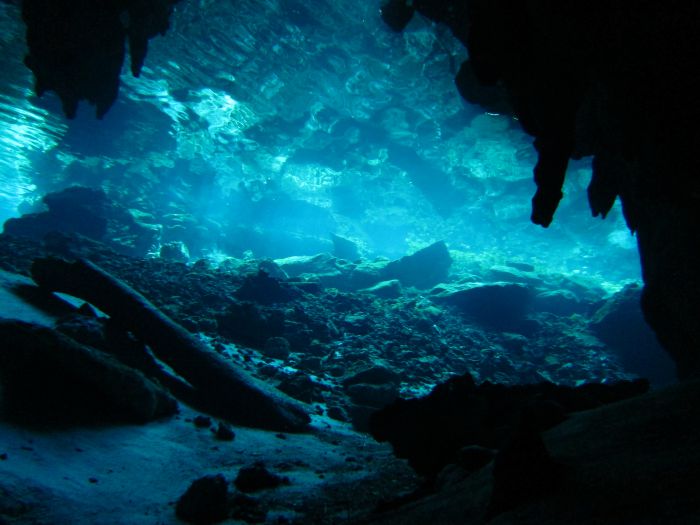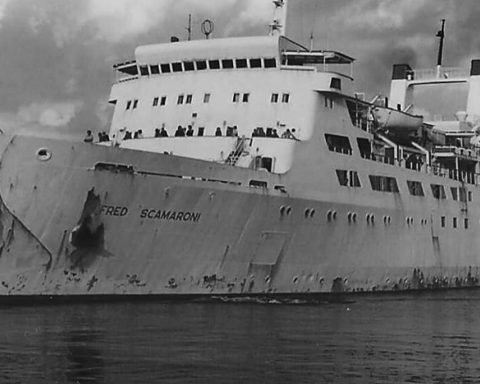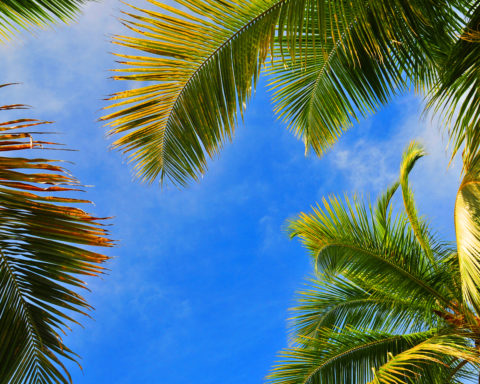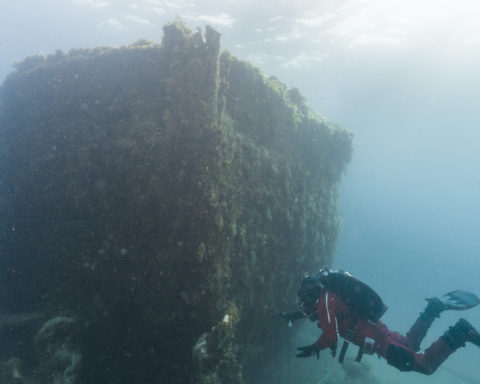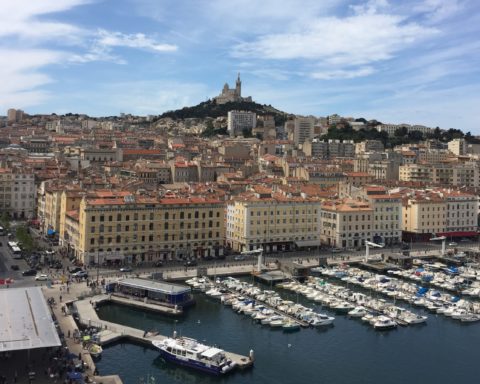
Scuba cave diving is a microcosm in the world of scuba diving a bit apart. Often regarded as one of the most dangerous sports in the world, practiced by atypical people, often strong and seemingly unmanageable; Underground diving requires in reality rigor, responsibility, camaraderie and humility in the face of risks. It is practiced at the crossroads of two worlds, that of underwater diving and speleology, making the speleonaut a diver by speleologists and a speleologist by divers. It is actually both at once.
Depending on the "origins", the diver will tend to visit submerged areas, while the speleologist will generally attempt to cross an aquatic obstacle (the siphon) to continue its land exploration. In France there is no legal framework for practice. It is not governed by the Sport Code. There is therefore no constraint or taxable hierarchy between practitioners. It is the playground that dictates the limits to this total freedom, which offers opportunities for fabulous innovations. Most tek diving techniques (see article) come from the underground world. Some will wonder why entering such special places. The motivations can be very diverse, but we can distinguish two major ones: walking and exploring places unexplored by Man in order to better know our environment and bring back data (topographical, geological, biological, hydrological, etc.) which Can help knowledge.
In both cases we are in love with this environment, so we will see what it has so special. It should be noted that underground diving is practiced in limestone massifs called Karsts (sometimes also in lava tunnels), where water has cleared its way through time and dug natural underground networks. The sites can be varied and range from underwater rivers such as those of Cassis (see article), to the small siphons that drown caves in the bottom of hole, passing by the beautiful resurgences like that of Fontaine de Vaucluse or the fairy Cenotes of Yucatan in Mexico. One can observe very pretty geological forms under ground called concretions. Stalactics, stalagmites, columns, draperies, gourds and eccentrics are natural gems that surely you would like.
For those less sensitive to mineral beauties, contrary to popular belief, there is life to be observed underground! It is possible to see fish and other animals that may have ventured into a conduit or that have been blocked millions of years ago and have become discolored such as niphargus (small white shrimp) or proteins. The peculiarities of the underground environment in relation to that of the sea are obscurity and the presence of a ceiling above the head. The lack of natural light is the cause of black, visibility can also quickly deteriorate with sediments and percolations caused by the movements of the diver and bubbles. Evolving to a non-free surface brings some constraints because one can not directly reach the surface in case of a problem. In a drowned conduit it is necessary to foresee the return by the same way as the way. The practice of underwater diving therefore requires some preparation and specific procedures in the event of an incident. Nothing is left to chance. The life line or wire of Ariadne thus makes it possible to find the exit.
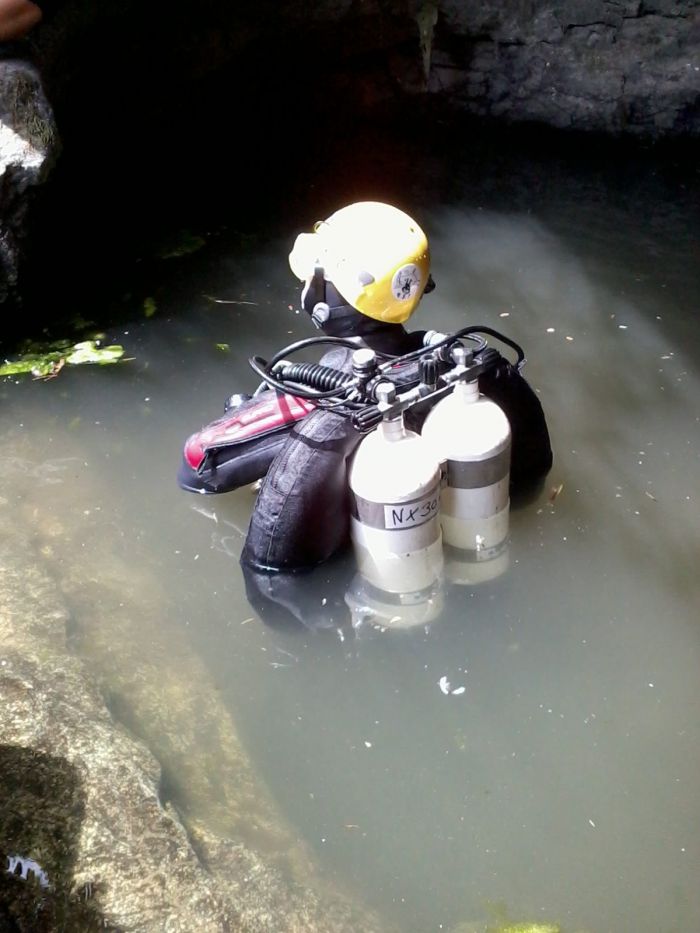
Arrows and labels are often used to give indications on the output, there are also other directional markers or not. Redundancy is practiced in ceiling diving, so everything is at least doubled (bottles, regulators, lamps, computers, etc.). It will be necessary to have a good technique of palmage and to control its buoyancy. All this management requires training. There are two major schools in underground diving, the "European" and the "American". The European is based on the philosophy of the solo, so there is no pair. The principle (ARA) is based on Autonomy, Redundancy and Adaptability. The rule of fifths or quarters is most often used for consumption management, the thread is metered and the configurations fairly hardy. The American school teaches, on the contrary, team logic with different procedures and materials: rule of third parties, use of a bi-bottle connected with a shut-off valve (manifold), a long pipe for the regulator of Relief in order to move to two a narrow and a more developed communication system. There is a curriculum for the American school (cavern diver, introduction to cave diver, cave diver, then specialties) giving right to prerogatives. Never venture with underwater diving equipment, at least in addition to the suit, plains and mask, a diving suit consisting of two bottles with complete DIN regulators, one wing, two identical strong lamps (Spare scissors or easycut), a compass and two dive computers.
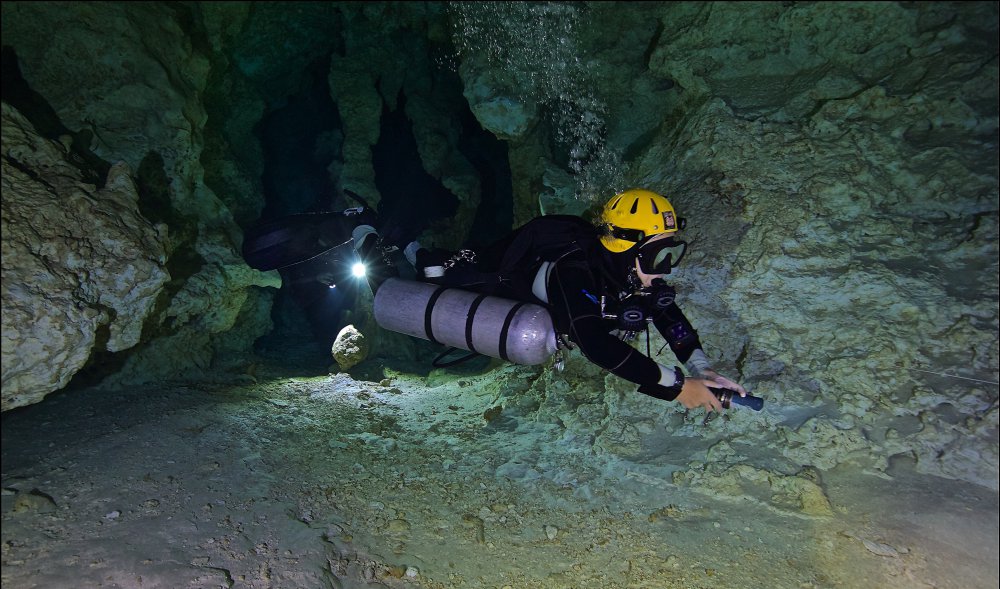
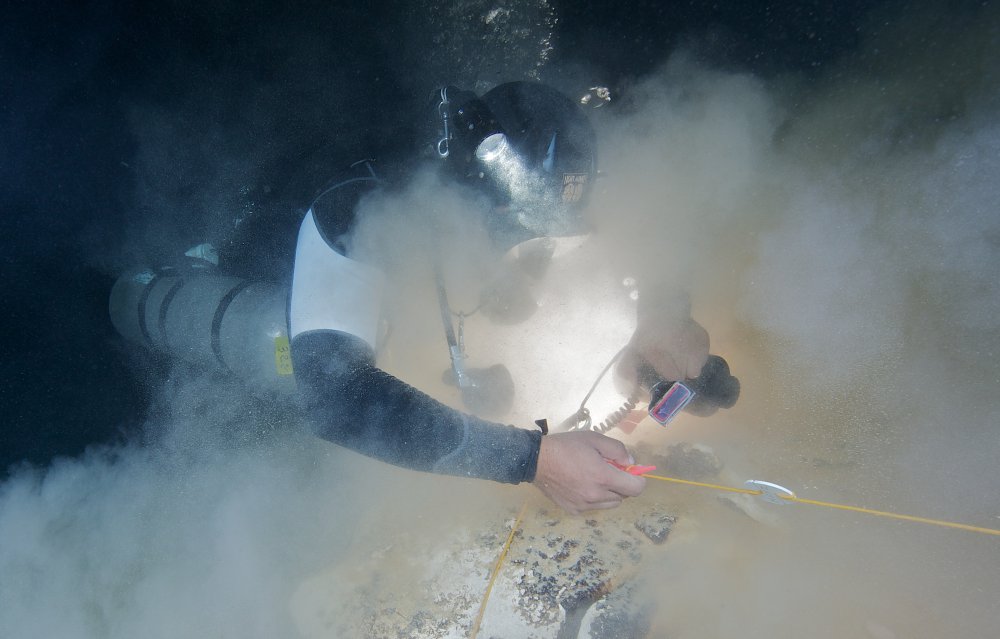
The helmet is highly recommended also it can prove very useful to protect the head of shocks or fall of stone out of the water as well as to arrange its lamps in order to keep hands free. One of the last characteristics of underwater diving is that in France, all speleological assistance is provided by the practitioners themselves. The caving French rescue is therefore empowered to intervene in this environment. You will understand that it is not advisable to embark on the self-learning of underwater diving. We advise you to follow a training given by a qualified professional or in a federal environment (internships within the French Federation of Speleology and The FFESSM) and a companionage in order to go there gradually.
The Click-Dive team, a dedicated diving reservation site, wishes you a wonderful dive.
Brice MASI
Pictures by Yannig CHARLES and Brice MASI
